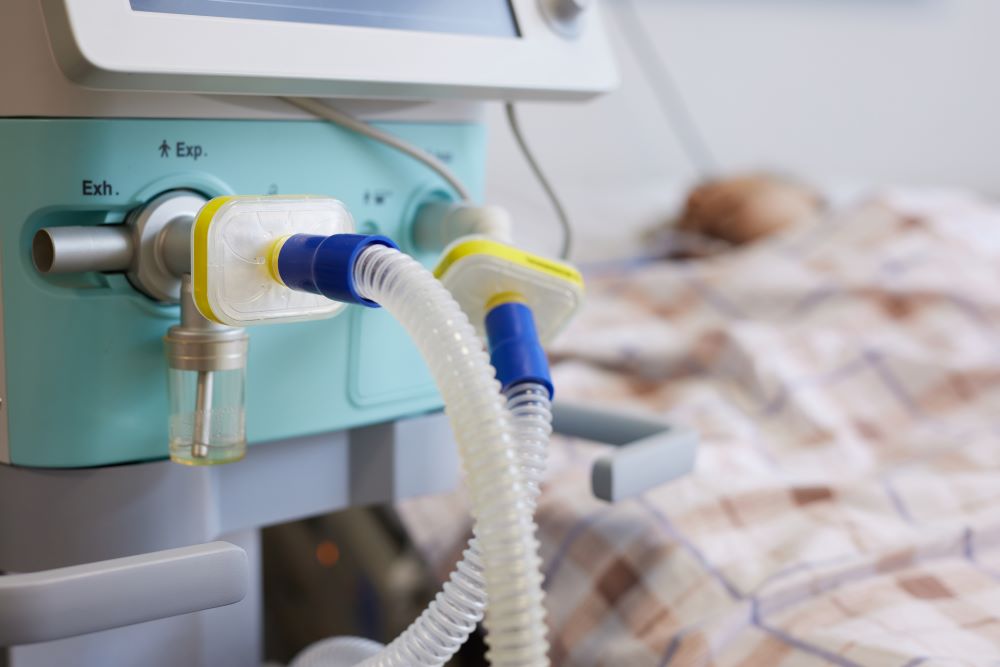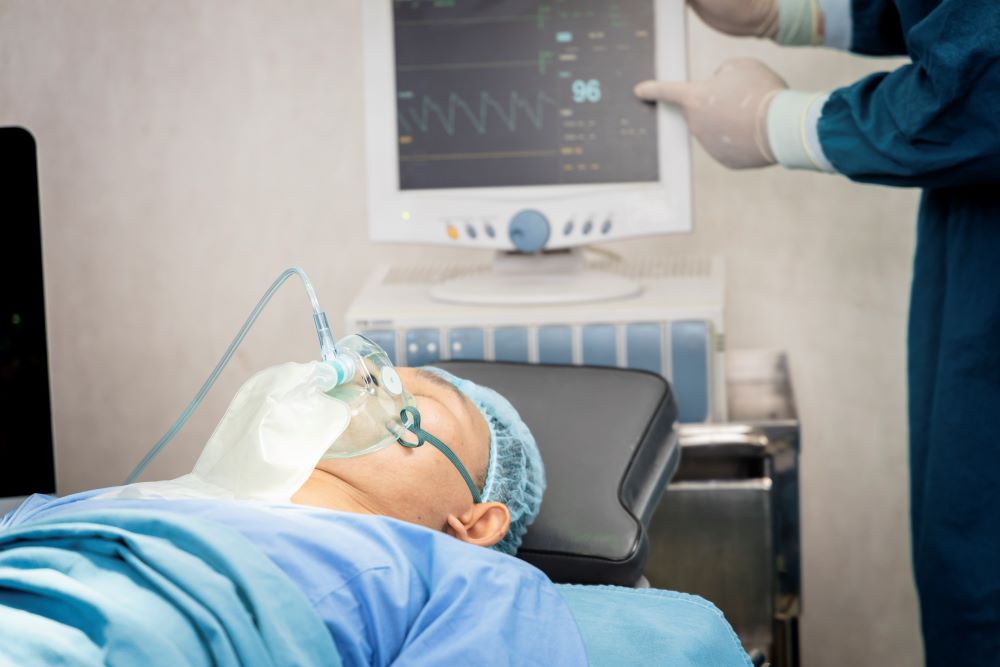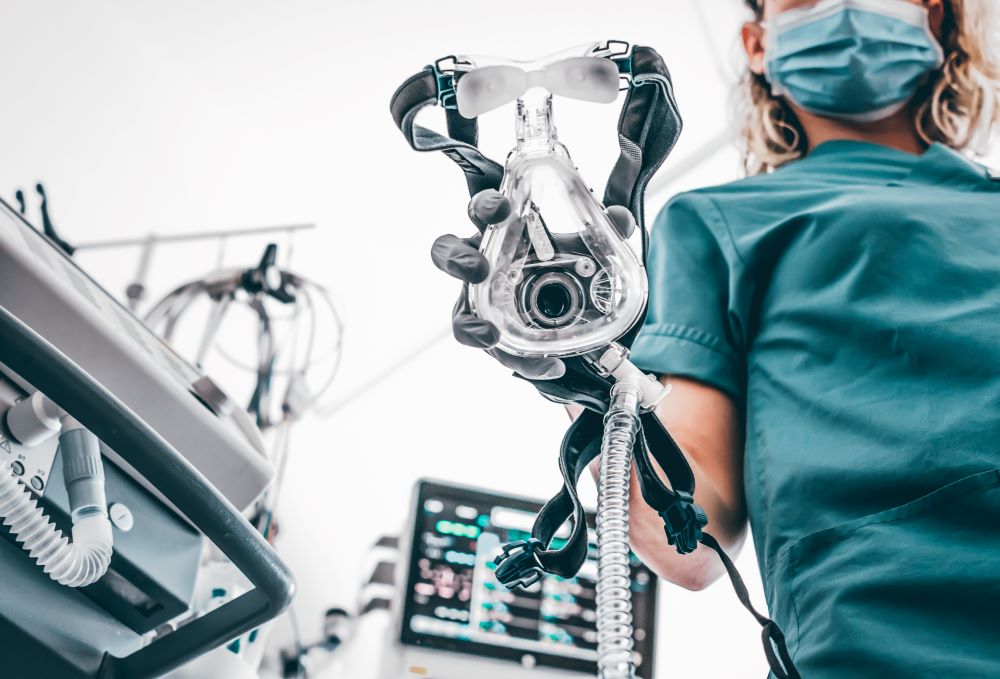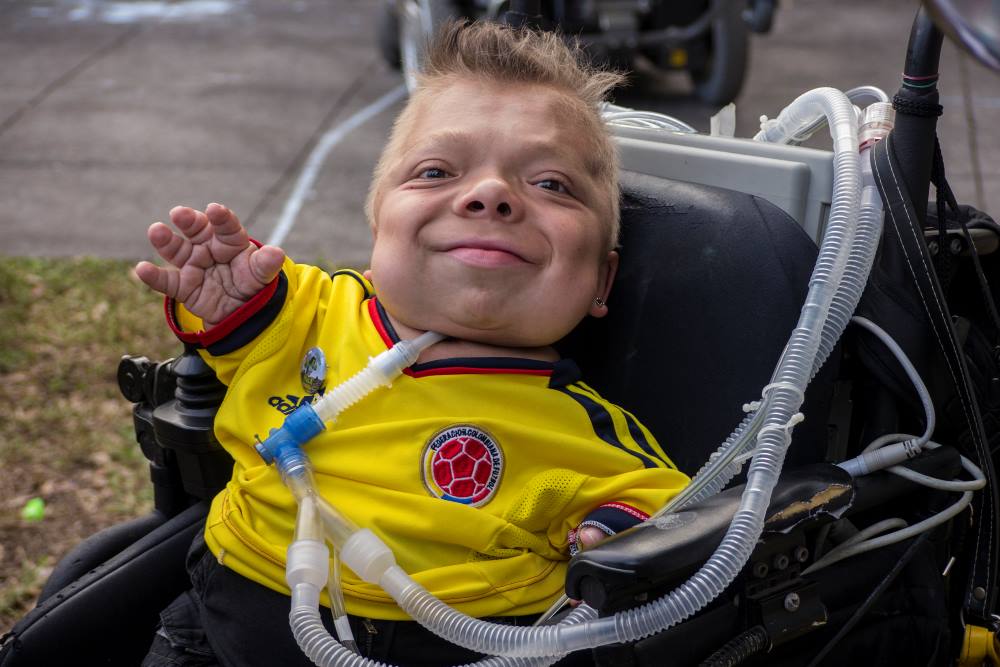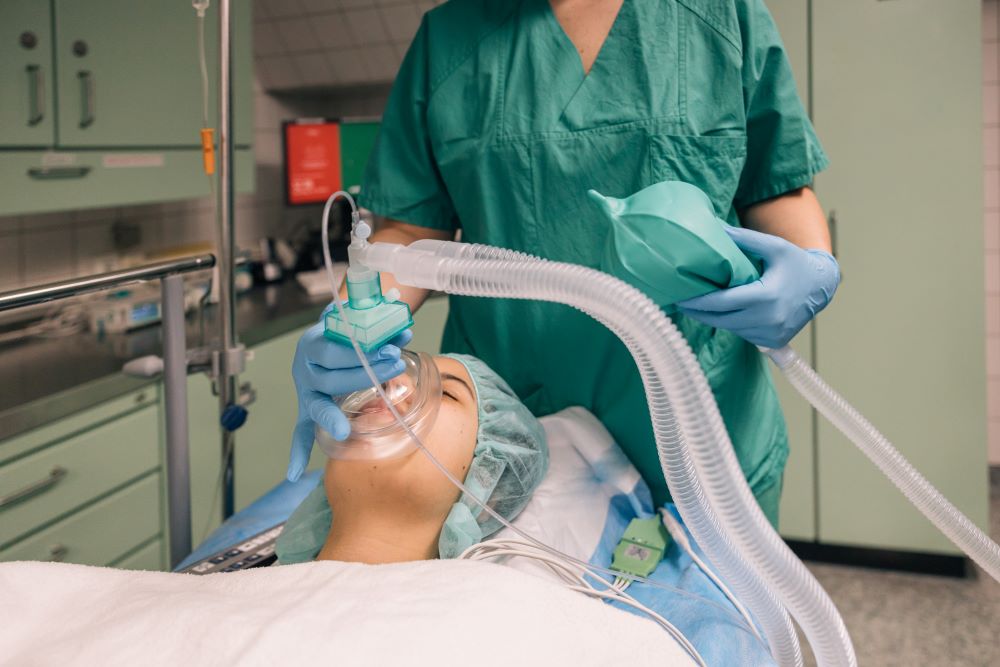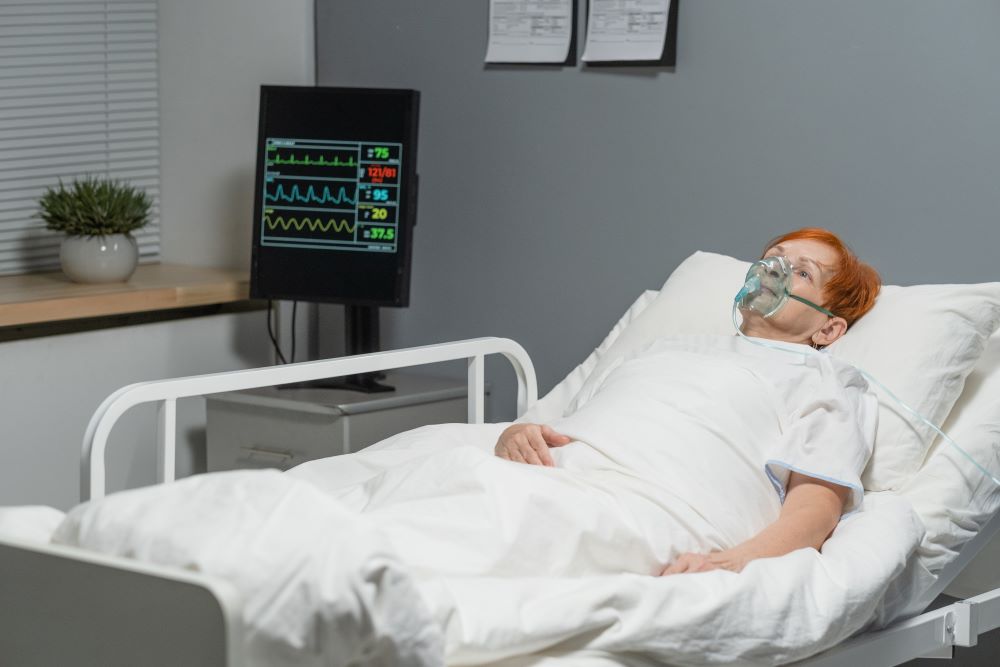You can receive ventilation in several ways as decided by your doctor. Here are the various types of ventilators you might require as per your health condition:
1. Face-mask Ventilator
A non-invasive process to support your breathing system and Oxygen levels, a face-mask ventilator was the most used ventilator during the pandemic. You need to wear a mask that properly fits over your mouth and nose as air flows inside your lungs. Additional devices that operate through a face mask are CPAP or Continuous Positive Airway Pressure, and BiPAP or Bi-Level Positive Airway Pressure.
You might have to use these masks if you have chronic health problems such as COPD or Chronic Obstructive Pulmonary Disease. The PAP therapy also helps in expelling carbon dioxide levels in your body, and it totally depends on your doctor which therapy they will choose. The benefits of a face-mask ventilator are:
Benefits
- Face-mask ventilator doesn’t require sedation.
- You can talk and swallow naturally.
- It is more comfortable than a breathing tube that goes down your throat and might be uncomfortable.
- It reduces chances of pneumonia or infection, which are side effects of breathing tube ventilation.
2. Breathing Tube/Mechanical Ventilator
An invasive process of ventilation, a mechanical ventilator is essential during severe cases when you cannot breathe on your own. In this case, your doctor will insert a breathing tube into your throat and down your windpipe to supply Oxygen to your lungs. The breathing tube is annexed to a ventilator which blows air into your respiratory system to supply your body with Oxygen. It blows away Carbon Dioxide from your respiratory system. Since this procedure is painful, doctors will sedate you before beginning the surgery.
If you or any of your loved ones are on ventilation for a long time, the doctor might require a Tracheostomy. Here, your physician makes a hole in the front section of your throat. Then they insert a tube into your trachea beneath your vocal cords which connect to a ventilator. Additionally, a ventilator unit regulates the volume, pressure, temperature, and humidity of air as controlled by the doctor. The mechanical ventilator uses are as follows:
Benefits
- It is possible to control airflow direction with this ventilator.
- You can integrate it with air conditioning.
- You can easily control the room temperature and the indoor humidity.
- One can consistently access the flow rate regardless of the ambient temperature.
- Easily operated via electricity.
- You can add a filtration system to this ventilation system.
3. Manual Resuscitator Bag
A manual resuscitator bag is necessary when you need to control the flow of air of the ventilator with your hands. These devices have an empty bag known as a "bladder". You require a squeeze to pump Oxygen into the respiratory system. Doctors also allow this bag when you require large breaths after suctioning, when the ventilator circuit changes, or during trach change. Your doctor can attach one of the tubes of this device into your throat, or you can attach them to a face-mask ventilator. This bag is a temporary solution if you must stop your mechanical ventilator due to power cuts.
Benefits
Advantages include:
- Ability to provide 100% Oxygen without the need for a reservoir.
- You can use it during emergencies.
- It is highly sensitive and can detect any change in airway pressure.
4. Tracheostomy Ventilator
You might require a tracheostomy ventilator if you have serious health conditions such as a neuromuscular issue that has weakened your breathing muscles. However, you might require this ventilator if you have undergone a tracheostomy. A tracheostomy is a surgery where your doctor will make a direct opening in your windpipe and insert a tube to allow airflow.
Therefore, you cannot breathe through your mouth or nose and can only breathe through the ventilator support provided through this opening.
Benefits
Here are the benefits of tracheostomy:
- You find it more comfortable to breathe.
- Easier suctioning and oral care is possible.
- You might not require sedation or analgesia.















